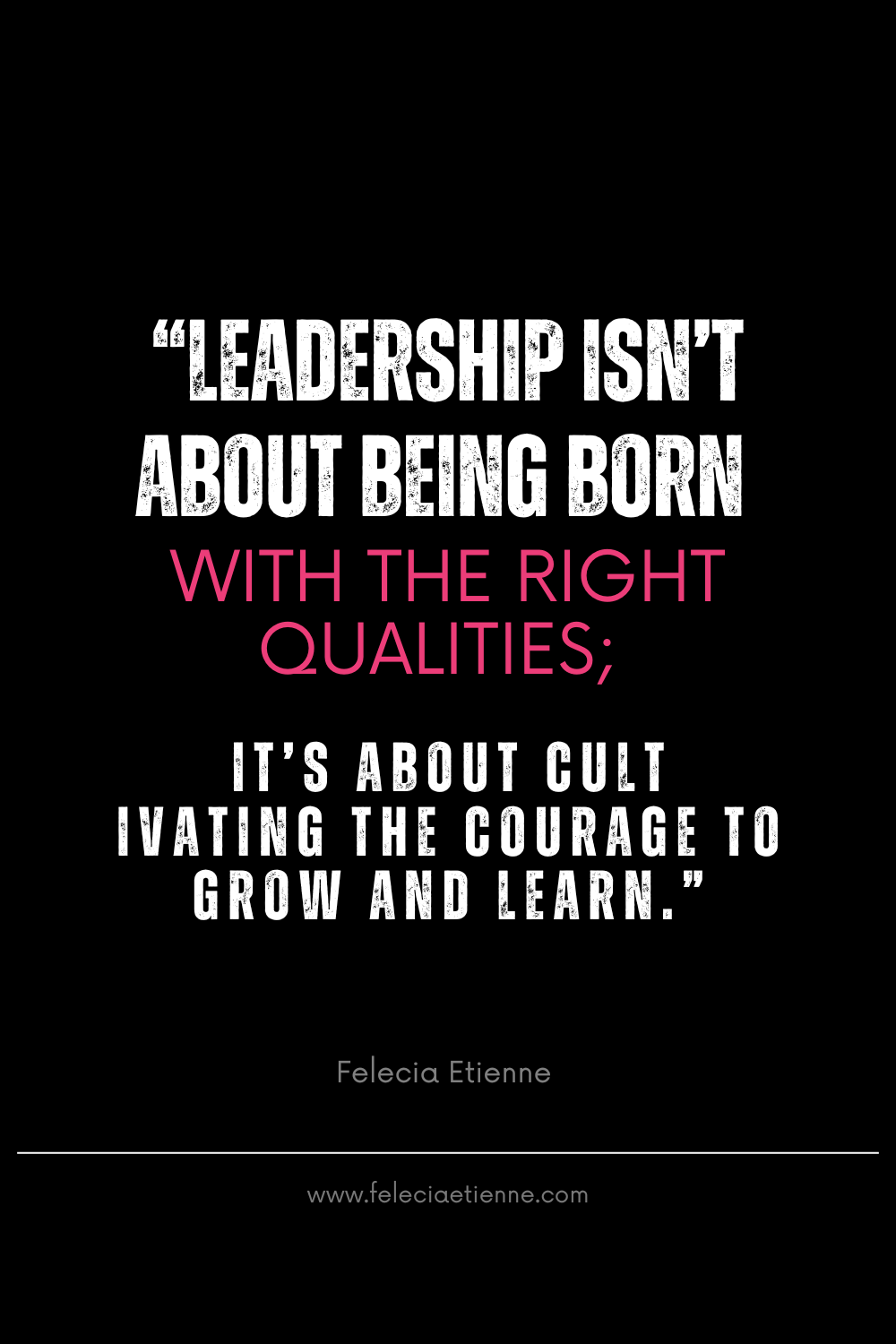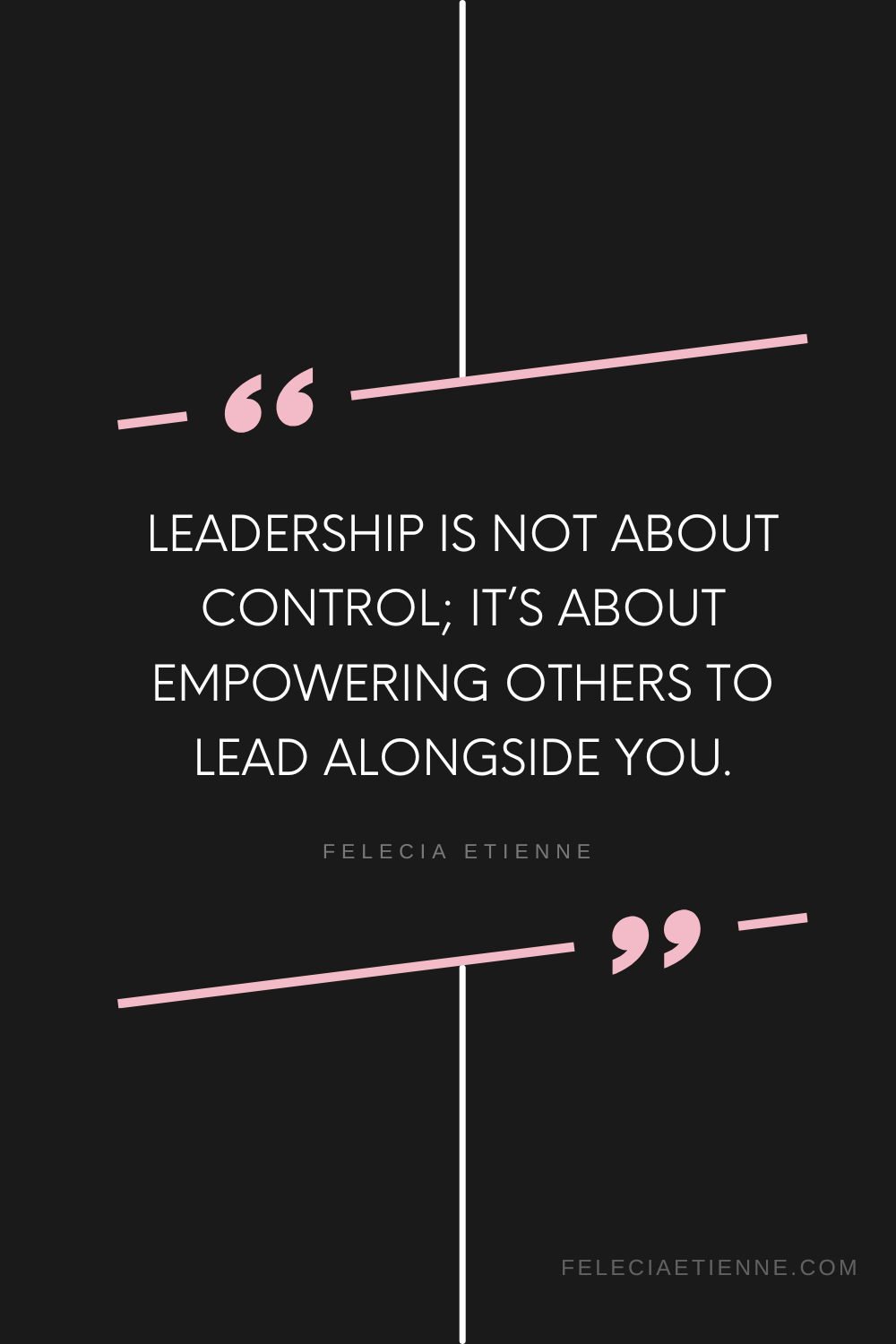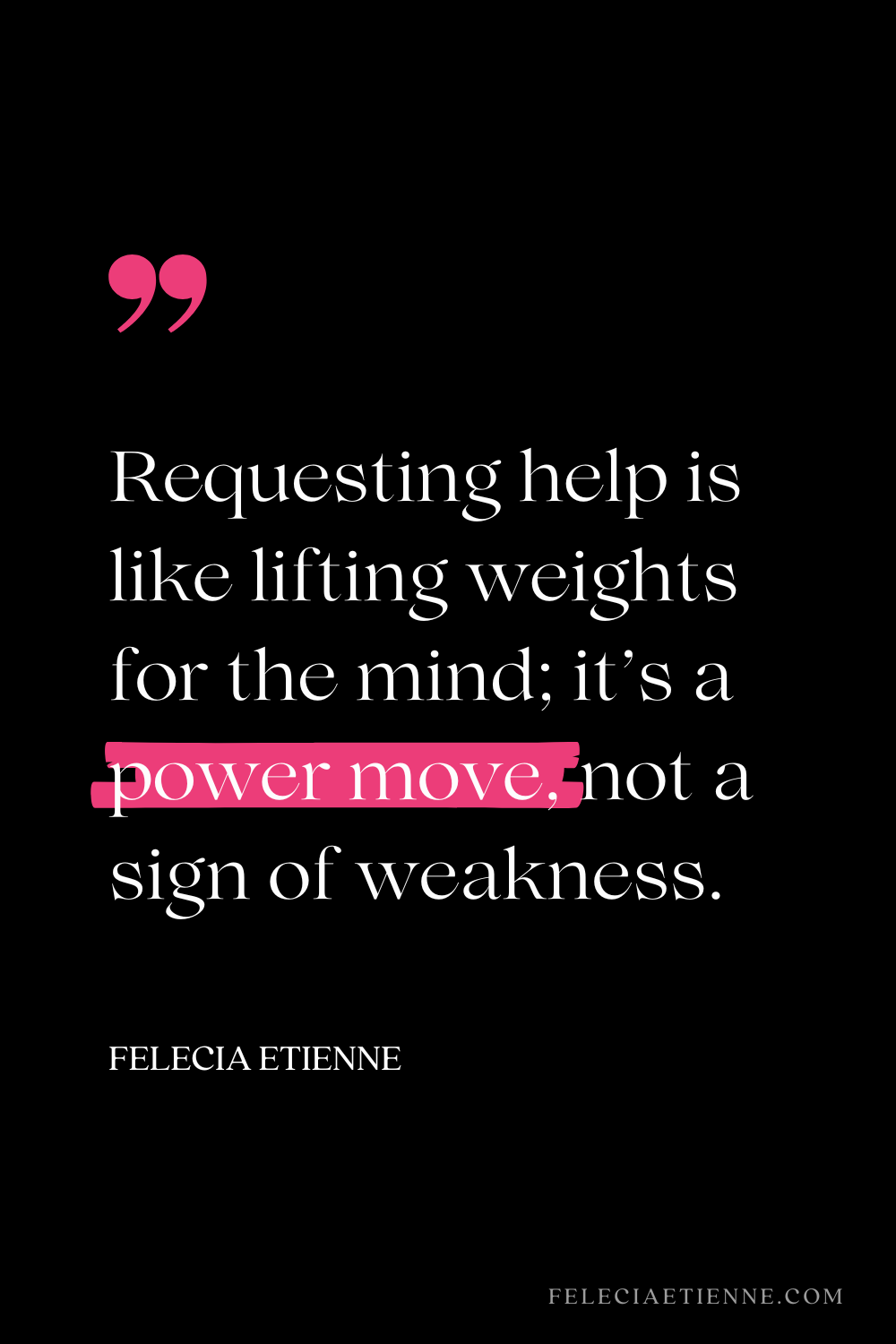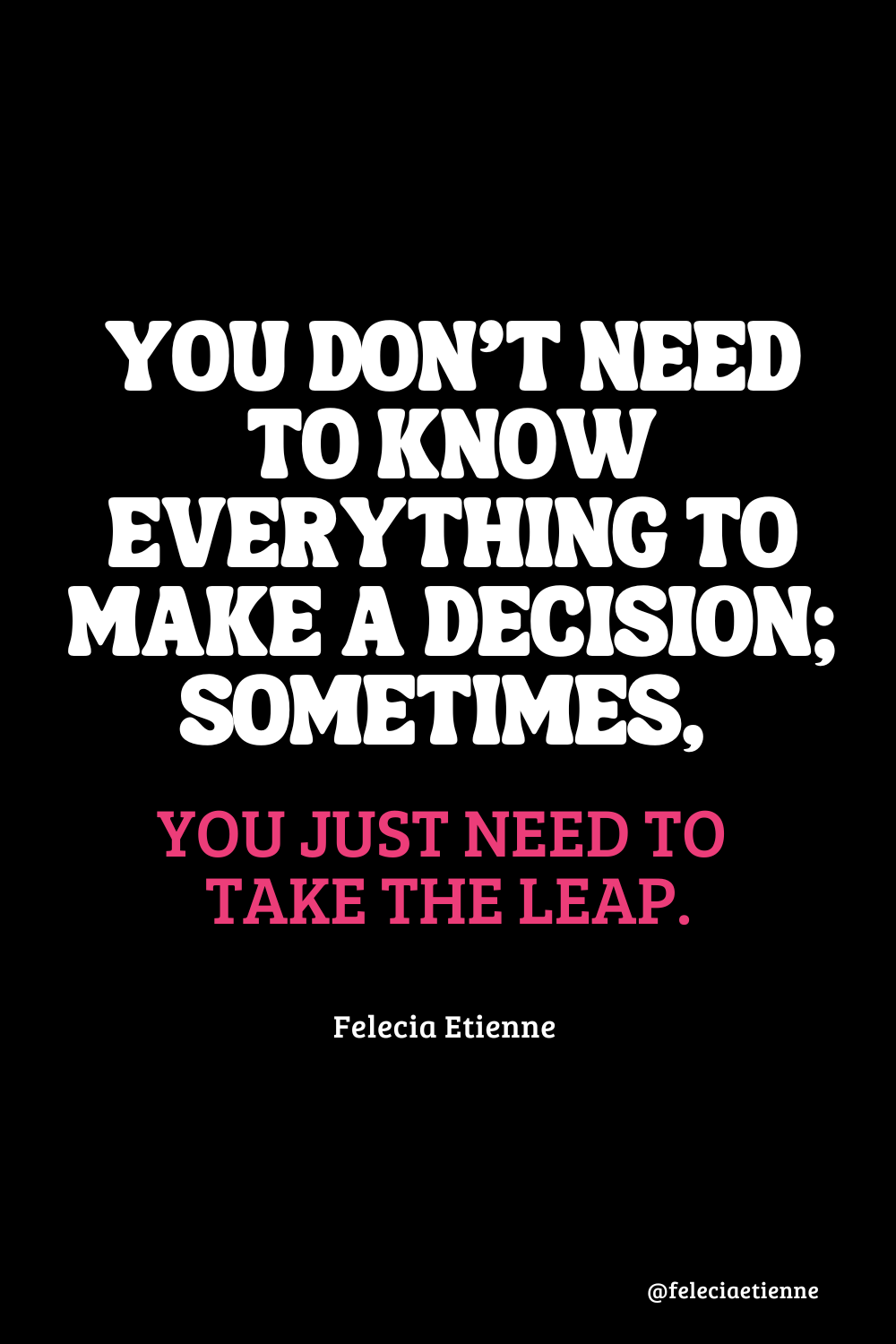15 Leadership Myths That Are Secretly Sabotaging Your Success (And What to Do Instead!)
Do you ever feel like, despite your best efforts, there’s an invisible ceiling stopping you from reaching your full leadership potential? Maybe you’re following the rules, keeping up appearances, and checking all the boxes — yet something still feels off.
If this sounds familiar, you’re not alone. Many high-achieving women, leaders, and professionals find themselves struggling to break through that invisible ceiling, often because they’re unknowingly trapped by outdated leadership myths. These myths can weigh you down, burn you out, and leave you feeling stuck, even when you’re working your hardest.
Today, we’re debunking 15 of the most common myths that are holding you back from leading with confidence and ease. Once you recognize these false beliefs, you’ll start seeing leadership from a whole new perspective — one that feels more authentic, aligned, and sustainable.
Why These Myths Matter (And Why You Need to Break Free)
For high-achievers like you — ambitious, driven, and wearing more hats than you can count — leadership isn’t just about managing tasks or people. It’s about creating the mental, emotional, and strategic foundation for sustainable success. But here’s the hard truth: the traditional ideas of leadership you’ve been conditioned to believe might be working against you.
Think about it. How many times have you told yourself things like, “I should have all the answers,” or, “I just need to work harder to get ahead”? These beliefs aren’t just tiring, they’re toxic. They force you into a cycle of overwork and overwhelm, leaving little space for creativity, innovation, or even joy.
Breaking free from these myths will allow you to step into your true leadership potential — the kind that not only drives results but also feels empowering and energizing.
Let’s dive in and start breaking down these myths, one by one.
Leadership Myths:
1. "Great Leaders Are Born, Not Made"
The Myth:
Have you ever found yourself thinking, “Leadership just isn’t my thing — it comes naturally to others”? You’re not alone! This belief has been around for ages, and it can really hold you back. It’s easy to look at others who seem to have it all figured out and feel like you’re missing some innate quality that makes them great leaders.
The Reality:
Here’s the truth: leadership isn’t something you’re born with; it’s a skill you can learn and refine over time. Think about the greatest leaders in history. They didn’t just pop into existence knowing how to lead. They invested in themselves, practiced relentlessly, faced setbacks, and kept pushing through challenges. The leaders you admire? Many have stumbled along their way but turned those failures into stepping stones for growth.
As a coach, I often see this myth holding my clients back. They come to me feeling discouraged, convinced they lack that elusive “it” factor for leadership. But once they start to embrace the idea that leadership is a skill, a transformation happens. They become more open to learning. They take courses, seek mentorship, and engage in self-reflection. Suddenly, their view of what it means to lead shifts dramatically.
“Leadership isn’t about being born with the right qualities; it’s about cultivating the courage to grow and learn.”
What You Should Do Instead:
Remember, your leadership journey is uniquely yours. Embrace the learning process and take proactive steps to enhance your skills. Whether that means joining a leadership program, asking for feedback, or diving into some great books on effective leadership, there are so many resources out there to help you on this journey.
Tip:
Take a moment to reflect on your leadership aspirations. What skills would you like to develop? Set a specific goal for yourself, like attending a workshop or finding a mentor. Every great leader started somewhere, and with each step you take, you’ll be one step closer to your own leadership greatness. Remember, every expert was once a beginner!
2. Do You Really Need to Be the Smartest Person in the Room?
Hey there! Let’s chat about something many leaders grapple with: the pressure to be the most knowledgeable person in any room. Does it ever feel like you’re expected to have all the answers? That fear of uncertainty can be a heavy weight to carry, especially when you’re worried it might undermine your authority. But here’s the kicker—it doesn’t have to be that way!
The Reality Check:
Great leaders understand that they don’t need to know everything. What truly matters is recognizing the value of diverse perspectives and expertise. Imagine creating a space where everyone on your team feels empowered to share their insights and ideas. Research backs this up: when you ask questions and encourage input, you not only enhance decision-making but also build trust and engagement among your team members.
Let’s Reflect:
I’ve seen this pattern with many clients who initially think they must lead from a place of omniscience. But guess what? Those who embrace the strengths of their teams often discover that asking for input leads to richer discussions and more innovative solutions. So, why not shift that mindset?
What You Can Do Instead:
Focus on collaboration instead of striving to have all the answers. Create an environment where your team feels comfortable sharing their knowledge and ideas. This not only enriches your leadership but also empowers your team to take ownership.
Here’s a Tip:
At your next team meeting, try asking open-ended questions that spark discussion. For example, ask, “What different perspectives do we bring to this challenge?” or “How can we use our diverse skills to tackle this issue together?” You might be surprised at how a simple question can ignite meaningful dialogue and shared ownership of outcomes.
So, next time you feel that pressure to be the smartest one in the room, remember: it’s about bringing out the best in others. You’ve got this!
3. Leaders Must Always Have a Clear Vision
Many people believe that effective leaders must have a clear, unwavering vision for the future. The pressure to articulate a specific plan can make leaders feel inadequate if they don’t have everything mapped out.
The Reality:
While having a vision is definitely important, being adaptable is just as crucial—if not more so! The business landscape is constantly shifting, and the best leaders are the ones who can adjust their sails when the winds change. Research from Harvard Business Review shows that leaders who embrace change and foster flexibility within their teams navigate uncertainties much more successfully.
“A great leader’s vision is not a straight line; it’s a dynamic journey of adjustments and growth.”
In my coaching practice, I've seen firsthand how leaders who open themselves up to vulnerability and actively seek team feedback create a culture of inspiration. When you invite your team to help shape your vision, you often ignite more commitment and creativity than you might expect.
What You Should Do Instead:
Instead of clinging tightly to a rigid vision, consider adopting a more fluid approach. Share your initial thoughts and be genuinely open to feedback. Allow your team to contribute to the direction you take! It’s about collaboration.
Tip:
Make it a point to set aside time for regular reflection with your team. Talk about what’s working, what’s not, and how your vision might evolve with their insights. This not only fosters a culture of collaboration but also gives everyone a sense of ownership in the journey.
RELATED ARTICLE: 12 Habits ALL Leaders Should Cultivate To Supercharge Their Results
4. Leaders Must Always Be Confident
You might think that as a leader, you need to project confidence at all times. It’s a common belief, right? But here's the thing: that pressure can make you feel like you have to hide your doubts or uncertainties, which can create a real disconnect with your team.
The Reality:
Authentic leadership isn’t about being perfect; it’s about being real. Research shows that when you admit you don’t have all the answers and share your uncertainties, you actually build stronger trust and loyalty among your team. People appreciate honesty—it humanizes you.
“True confidence lies not in having all the answers but in being open to learning and growth.”
In my experience, I’ve noticed that leaders who embrace their vulnerabilities often inspire their teams to do the same. This creates a culture where openness and resilience thrive.
What You Should Do Instead:
Focus on authentic communication. Be honest with your team about your thoughts and feelings. Acknowledge your strengths, but don’t shy away from sharing areas where you’re still growing. This kind of vulnerability can be a powerful connection tool.
Tip:
In your next one-on-one or team meeting, why not share a challenge you’re facing? Invite your team to brainstorm ways they can help you tackle it. This kind of openness not only encourages
5. Leadership Means Being in Control
Let’s clear up a common misconception: many people think that being an effective leader means keeping a tight grip on your team and every process. This idea often leads to micromanagement, which can really stifle creativity and initiative.
Here’s the truth: Great leaders empower their teams to take ownership and make decisions. In fact, a study by Gallup shows that organizations that promote autonomy see higher engagement and productivity levels among their employees.
Think of it this way:
“Leadership is not about control; it’s about empowering others to lead alongside you.”
I’ve worked with clients who initially struggled to delegate tasks. They discovered that when they empowered their teams, it not only relieved their own stress but also sparked greater innovation and engagement within the group.
So, what should you do instead?
Focus on cultivating a culture of trust and empowerment. Give your team the freedom to make choices and encourage them to take initiative.
Here’s a tip to get started:
Delegate a project or responsibility to one of your team members and let them lead. Offer your support and guidance, but resist the urge to micromanage. You’ll be surprised how transformational this experience can be for both you and your team. Embrace this change, and watch your leadership grow!
RELATED ARTICLE: Simplify to Thrive |10 tips to save 3-5 hours every week
6. Leaders Must Always Be Available
Many believe that effective leaders must always be accessible to their teams. This belief can lead to burnout and overwhelm, as leaders stretch themselves thin trying to meet everyone’s needs.
The Reality:
While being available is important, it’s equally crucial for leaders to set boundaries and prioritize self-care. Research from the American Psychological Association highlights the significance of self-care in preventing burnout and enhancing overall effectiveness.
“To be a great leader, you must first take care of yourself. Only then can you truly support others.”
What You Should Do Instead:
Set specific times for availability and communicate them to your team. Encourage them to respect these boundaries while promoting autonomy.
Tip:
Schedule regular “office hours” where team members can come to you with questions or concerns. Outside of these times, focus on your own priorities to maintain balance and energy.
7. Leaders Don’t Show Vulnerability
Many people believe that vulnerability equates to weakness, especially in leadership roles. The misconception is that a leader must always present a facade of strength and control. However, this mindset can create barriers between leaders and their teams, fostering an environment where open communication is stifled.
The Reality:
Vulnerability is a powerful tool in leadership. Research from Brené Brown highlights that leaders who share their challenges and uncertainties foster trust and connection within their teams. When leaders show their human side, it encourages team members to do the same, creating a culture of openness and collaboration.
RELATED ARTICLE: Achieving Sustainable Success by Cultivating Self-Compassion
“Vulnerability is not weakness; it’s our greatest measure of courage.”
In my coaching practice, I’ve seen clients transform their leadership by embracing vulnerability. When they share their struggles, their teams feel more empowered to share theirs, leading to increased creativity and problem-solving.
What You Should Do Instead:
Embrace vulnerability as a strength. Share your challenges and failures alongside your successes to foster deeper connections within your team.
Tip:
Consider sharing a recent challenge you faced and how you navigated it in your next team meeting. This simple act can open up conversations and encourage your team to share their experiences as well.
8. Being Busy Equals Being Productive
In today’s fast-paced world, busyness is often mistaken for productivity. Many leaders pride themselves on being perpetually busy, believing that long hours equate to success. However, this mindset can lead to burnout and hinder genuine progress.
The Reality:
True productivity is about prioritizing tasks that align with your goals, not just staying busy for the sake of appearances. Research from the Harvard Business Review emphasizes that focused work on high-value tasks leads to greater success than simply being busy.
“It’s not about how busy you are; it’s about how productive you are.”
I’ve observed that many of my clients feel overwhelmed by their schedules, mistaking constant activity for achievement. Once they learn to prioritize tasks that genuinely move them forward, they find renewed energy and focus.
What You Should Do Instead:
Shift your perspective from busyness to intentional action. Focus on what truly matters and let go of activities that drain your energy without contributing to your goals.
Tip:
At the end of each week, reflect on the tasks you completed. Identify which activities truly contributed to your objectives and which were merely busy work. Adjust your focus accordingly for the following week.
RELATED ARTICLE: The productivity lies: Debunking the 5 most popular productivity myths
9. Leaders Should Be Available 24/7
Many leaders operate under the belief that they must always be accessible to their teams. This constant availability can lead to burnout and stress, as the pressure to respond immediately creates an unsustainable work environment.
The Reality:
Effective leadership includes setting boundaries to maintain balance and mental health. According to research from Gallup, leaders who establish clear boundaries not only protect their well-being but also foster trust and independence within their teams.
“You can’t serve up your best when you’re running on fumes; fill your cup before you start pouring!”
In my work, I’ve seen leaders who struggle with constant availability find that setting boundaries actually empowers their teams. When team members know they have the autonomy to make decisions, it fosters a sense of ownership and responsibility.
What You Should Do Instead:
Establish clear boundaries regarding your availability. Communicate these boundaries to your team, encouraging them to find solutions independently when possible.
Tip:
Designate specific “office hours” for availability and stick to them. Outside of those hours, focus on your priorities, knowing that your team is capable of handling things in your absence.
10. A Strong Leader Never Needs Help
The belief that asking for help signifies weakness is prevalent among many high achievers. This myth can prevent leaders from seeking collaboration, ultimately stifling their own growth and the potential of their teams.
The Reality:
The most effective leaders embrace collaboration and are unafraid to ask for support. Research indicates that leaders who seek help create environments where team members feel safe to do the same, leading to increased innovation and problem-solving.
“Requesting help is like lifting weights for the mind; it’s a power move, not a sign of weakness!”
I’ve witnessed clients transform their leadership style by understanding the value of asking for help. When they delegate tasks and seek input, they often discover new strategies and perspectives that enhance their effectiveness.
What You Should Do Instead:
Give yourself permission to ask for help and delegate responsibilities. Recognize that collaboration can lead to better outcomes for everyone involved.
Tip:
Identify one task or project you can delegate to a team member this week. Not only will this lighten your load, but it will also empower your team to take ownership and contribute.
11. Leadership Means Controlling Every Outcome
The myth that leaders must control every decision and outcome can lead to stress and frustration. This desire for control often results in micromanagement, which can hinder team performance and creativity.
The Reality:
Effective leadership is about guiding teams and empowering them to make decisions. According to a study by the Center for Creative Leadership, leaders who foster autonomy see increased engagement and innovation in their teams.
In my coaching sessions, I’ve seen leaders shift from a controlling mindset to one of empowerment, resulting in greater team satisfaction and productivity.
What You Should Do Instead:
Focus on setting clear expectations and providing guidance rather than controlling every aspect of a project. Trust your team to take the lead.
Tip:
During your next project, outline the goals and expectations clearly, then step back and allow your team to determine how to achieve them. Offer support and guidance without micromanaging.
RELATED ARTICLE:12 Science-Backed Productivity Hacks: How to Amp Up Your Efficiency and Achieve More
12. Perfectionism Equals Excellence
Let’s talk about something that often trips us up—perfectionism. Many leaders like to think that being a perfectionist means having high standards. They believe that flawless execution is the key to success. But here’s the catch: this mindset can actually lead to a lot of stress and can stop you from growing. Why? Because the fear of making mistakes can smother your creativity and innovation.
The Reality:
True excellence comes from continuous improvement and learning from our blunders, not from chasing after perfection. Research shows that leaders who cultivate a growth mindset build environments where their teams feel safe to take risks and learn from failures. That’s where the magic happens!
I’ve seen countless clients get stuck in a perfectionist loop. They often feel paralyzed by the fear of not getting it just right. But when they start to embrace progress over perfection, it’s like a light bulb goes on! They unlock new avenues of creativity and innovation that they didn’t even know were possible.
“Perfection is like a roadblock on the highway of progress—just take the detour and keep moving!”
So, what should you do instead?
Let go of that need for perfection and start focusing on progress. Encourage your team to take risks and to learn from their experiences. Trust me, it’ll pay off!
Tip:
Challenge yourself and your team to set “good enough” standards for your projects instead of striving for an unattainable perfect outcome. Embrace feedback and iteration as part of the journey. Remember, it’s all about the growth you achieve along the way!
13. Leaders Must Know Everything Before You Act
Let’s face it: many leaders feel this immense pressure to have all the answers before making a move. It’s a common trap that can lead to analysis paralysis, where indecision takes over and progress stalls.
Here’s the reality:
Effective leaders don’t wait until they know everything; they take action even when things are uncertain. A study from the Wharton School highlights that decisive leaders who embrace calculated risks often find more success in navigating complex situations.
“You don’t need to know everything to make a decision; sometimes, you just need to take the leap.”
In my experience, I’ve witnessed clients transform from hesitant decision-makers into confident leaders simply by embracing those calculated risks. This shift not only opens doors to new opportunities but also builds your resilience.
So, what should you do instead?
Cultivate a mindset of action. It's crucial to embrace the uncertainty that comes with decision-making. Focus on gathering the key information you need to inform your choices, rather than seeking all the answers.
Tip:
Set a deadline for making a decision on whatever challenge you’re facing right now. Gather the necessary insights, trust your instincts, and take action. Remember, you can always adjust your course if needed.
14. Leadership is About Position, Not Influence
Have you ever found yourself thinking that leadership is all about having a fancy title? You’re not alone. Many people associate leadership with formal positions, but this mindset can create a gap. The truth is, true influence comes from building relationships and inspiring others—not just from what’s on your business card.
The Reality:
Leadership is really about the impact you have, no matter where you sit on the organizational chart. Research from the Center for Creative Leadership shows that informal leaders can significantly shape team dynamics and drive organizational success.
I’ve seen clients come to this realization firsthand. They discover that their ability to influence others often goes far beyond their official roles. When they focus on nurturing relationships, their leadership presence expands exponentially.
“Leadership is not about titles; it’s about the influence you wield.”
What You Should Do Instead:
Start recognizing that your influence is valuable, regardless of your title. Make it a priority to cultivate genuine connections and inspire those around you to work towards shared goals.
Tip:
Take some time to connect with colleagues at all levels in your organization. Ask for their thoughts on current projects or challenges. This not only fosters collaboration but also strengthens those vital relationships that can elevate your leadership game.
RELATED ARTICLE: The Ripple Effect of Kindness: Boost Your Well-being and Achieve Success Through Simple Acts
15. Leaders Have to Work Harder than Everyone Else? Not Quite!
You might have heard the saying that true leadership means putting in more hours than anyone else on your team. It’s a common belief, but let’s be real—this mindset can lead you straight to burnout and frustration.
Here’s the real deal:
The most effective leaders are the ones who work smarter, not harder. They know how to prioritize their tasks, delegate effectively, and zero in on the high-impact activities that really drive results. Research shows that when you delegate wisely, not only does your productivity soar, but your team’s satisfaction does too.
I’ve seen many leaders completely transform their effectiveness by learning to delegate and prioritize. This shift not only boosts productivity but also creates a healthier work-life balance for everyone involved.
Let’s keep it simple:
“True leadership is about working smarter, empowering others, and focusing on what truly matters.”
So, what should you do instead?
Shift your focus from just putting in the hours to making a strategic impact. Take the time to identify the high-value tasks that will move you closer to your goals. Then, empower your team by handing over some responsibilities. This way, you can all maximize your productivity together.
Tip:
At the start of each week, take a moment to pinpoint the three most important tasks that will help you inch closer to your goals. Direct your energy there, and don’t hesitate to delegate the rest to team members who are ready to take them on. You’ll be surprised at how much more you can achieve when you prioritize and collaborate!
RELATED ARTICLE: Simple Goal-Setting Tips for High Performers | Part 1
FAQ: Addressing Your Biggest Leadership Concerns
Q: What’s the most harmful leadership myth that keeps people stuck?
The belief that great leaders are born, not made, is one of the most limiting myths. It prevents many high achievers from stepping into their full potential, as they feel they lack the innate qualities required for leadership. The truth is, leadership is developed through intentional practice, learning, and growth. Research indicates that skills like emotional intelligence, effective communication, and strategic thinking can be cultivated over time.
Q: How can I stop falling into the perfectionism trap?
Perfectionism often stems from fear — fear of judgment, failure, or not being enough. To combat this, focus on progress over perfection. Set small, achievable goals and celebrate your wins along the way. Shift your mindset to view mistakes as opportunities for learning. According to Brené Brown, embracing imperfection can lead to increased creativity and resilience.
Q: Should I be vulnerable as a leader, or will it make me look weak?
Vulnerability is one of the most underused leadership tools. Being open about your challenges builds trust and fosters deeper connections with your team. It also gives others permission to be authentic, creating a culture of openness and growth. Studies have shown that leaders who demonstrate vulnerability are perceived as more relatable and competent.
Q: How do I manage the pressure to always be available?
The pressure to be constantly available can lead to burnout. It's essential to set boundaries to protect your time and energy. Communicate your availability to your team and encourage them to do the same. Research suggests that establishing clear boundaries enhances productivity and improves work-life balance. Prioritizing self-care can also enhance your effectiveness as a leader.
Q: How can I foster a culture of innovation within my team?
To encourage innovation, create a safe space for team members to share their ideas without fear of criticism. Implement regular brainstorming sessions where all ideas are welcomed, and establish a feedback loop to refine those ideas. According to Harvard Business Review, teams that engage in open dialogue and collaborative problem-solving are more likely to generate innovative solutions.
Q: What should I do if my team isn’t meeting expectations?
When team members aren’t meeting expectations, it’s crucial to approach the situation with curiosity rather than judgment. Conduct one-on-one check-ins to understand their challenges and provide support. Setting clear, achievable goals and offering regular feedback can help align team efforts. Research shows that effective communication and support increase accountability and performance.
Conclusion: It’s Time to Flip the Script on Leadership
By now, you’ve probably recognized a few myths you’ve been holding onto. The good news is that simply being aware of them puts you in a position of power — you can choose to let them go and lead in a way that feels aligned with who you truly are.
It’s not about doing more, knowing more, or being perfect. It’s about leading with intention, setting boundaries, and embracing your strengths (and imperfections). This is where real leadership begins — in the choices you make every day to show up authentically and purposefully.
Take Action: Break Free from the Myths
Here’s your challenge:
Take 10 minutes today to reflect on which leadership myths have been holding you back. Write down one myth you’ve been carrying and replace it with a new belief that serves you better.
For example, instead of believing you must work harder than everyone else, flip the narrative to: I work smarter, focusing on what moves the needle while empowering my team to thrive.
The first step to transforming your leadership is letting go of the old, outdated beliefs that no longer serve you.
Ready to take this further?
As a high-achieving woman, you already have everything you need to lead with power and purpose. Sometimes, it’s just about having the right tools and strategies to unlock your potential. If you’re ready to go deeper, let's connect and explore how you can lead with more clarity, confidence, and success — without burnout.
Ready to achieve your dream life? I’m Felecia Etienne, your go-to Certified High-Performance Coach™ and Mental Fitness Coach. Let me take you on a transformative journey with a Complimentary Unlock Your Performance EDGE call. This isn’t just a chat—it’s your ticket to the high-performance tools and techniques I’ve shared with my coaching clients.
In this personalized call, you'll:
- Dive into your dreams and goals, tackle obstacles, and bridge the gap between where you are and where you want to be.
- Uncover and combat triggers of self-sabotage while discovering untapped strengths.
- You'll walk away with actionable strategies that deliver immediate impact
Equip yourself with the strategies, resources, and support needed to shatter obstacles, self-sabotaging, narrow the gap, and transform your ambitions into tangible achievements. Ready to escape inertia and boost your impact? Book a private and confidential session. Unlock Your Performance EDGE with Felecia. Let's unlock your potential together.
To find out more about Felecia, you can visit her website at feleciaetienne.com.
Social Media Handles:





















